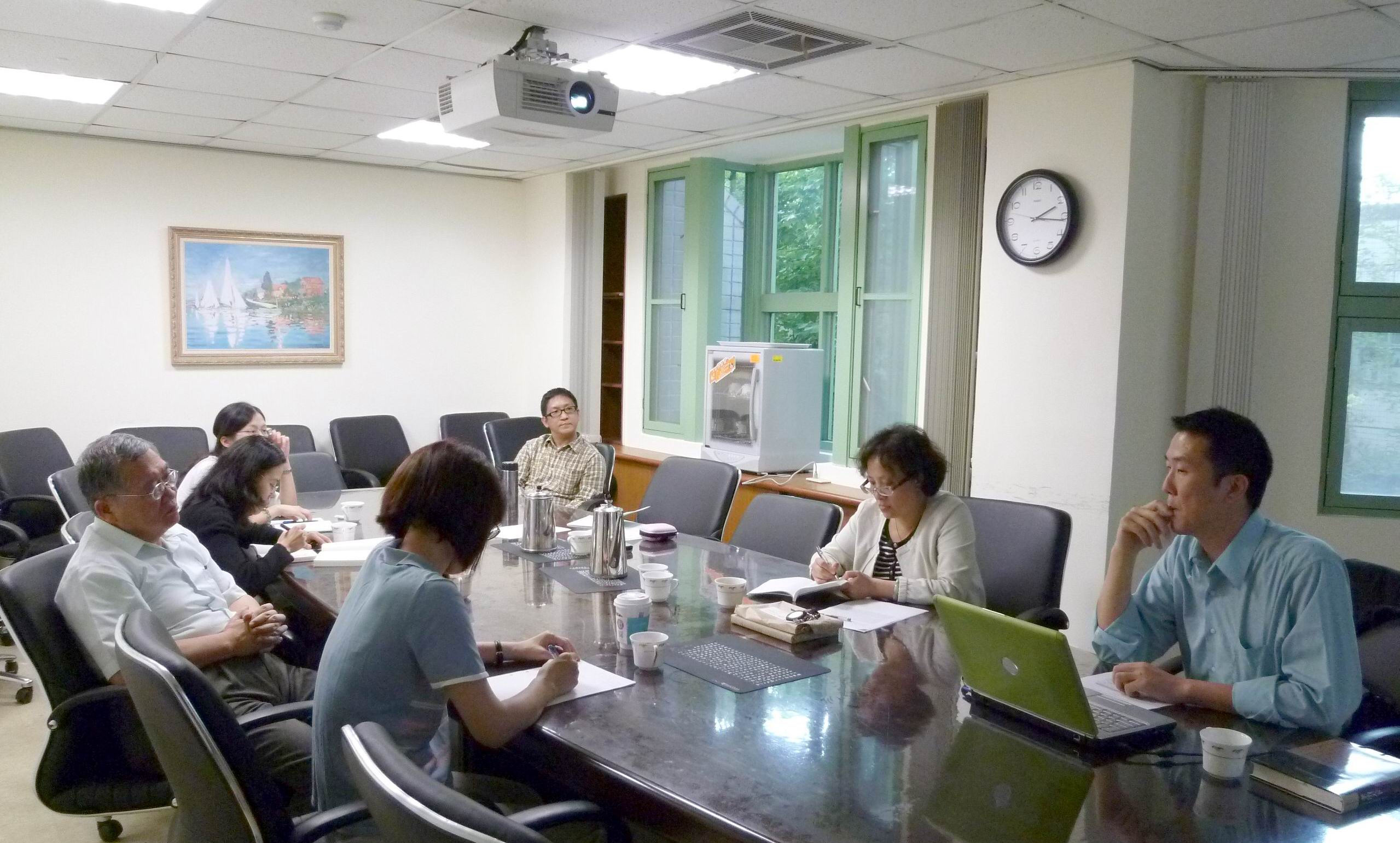“ Sanctity and Self-Inflicted Violence in Chinese Religions , 1500-1700 ” ——俞永峰教授講演活動紀要
|

|
清史讀書會於 2012 年 5 月 30 日(星期三)邀請美國佛羅里達州立大學宗教系俞永峰教授 (Jimmy Yu) 前來演講,講題為「Sanctity and Self-Inflicted Violence in Chinese Religions , 1500-1700」。
俞老師於 2008 年取得普林斯頓大學博士學位,今年出版了 Sanctity and Self-Inflicted Violence in Chinese Religions , 1500-1700 一書,此次演講即是以舉例方式,介紹書中有關明末清初血書經文、割股療親、節婦自殘等自我身體暴力行為的現象與意義。大綱如下:
During the sixteenth and seventeenth centuries, thousands of men and women exercised the instrumentality of their bodies to accomplish different goals. Buddhists and non-Buddhists alike sliced open their tongues and fingers to copy scriptures with their blood; emperors and magistrates exposed their naked bodies to produce rain; sons and daughters secretly sliced a piece of their own flesh to feed their parents to demonstrate their filial piety toward them; young, chaste widows cut off their noses to permanently undermine their eligibility when forced to remarry. Textual sources on self-inflicted violent practices appear to be particularly abundant during this time. Nearly all gazetteers in every part of China include sections devoted to pious children and chaste widows who engaged in such practices. Graphic cases of self-inflicted violence are also found in religious tracts, illustrated books, popular literature, fiction, and poetry during this period. In some sources, performers are eulogized and revered as exemplars to be emulated. In others, they are scorned and their acts are contested. Yet, whether revered and scorned, these practices were an inextricable part of the sixteenth- and seventeenth-century Chinese experience.
This talk focuses on a range of body practices of blood writing, filial body-slicing, chastity mutilations and suicides, and ritual exposure and self-immolation. My central argument is that self-inflicted violence in the form of socially sanctioned and routinized bodily mutilations was a widespread and highly visible part of the sixteenth- and seventeenth-century cultural life that transcended religious boundaries. It was the most effected way people negotiated their subjectivity and sanctity. Performers engaged in self-inflicted violence to exercise power and to affect people, events, and the environment. It enabled them to graphically and viscerally demonstrate moral values, reinstitute order, forge new social relations, and secure boundaries against the threat of moral ambiguity. Their acts were often systematic, ritualized, and replete with meaning for both the performers and their audiences.
俞老師指出,僧侶將血書《金剛經》等佛經經文視為一種誠心苦行的表現,藉由割舌、割指的痛苦傳達信仰的虔誠,且這類行為至今依舊存在。福建鼓山湧泉寺,最晚從十一世紀開始收藏血書經文,可惜明初遭遇火劫付之一炬,目前時代最早的藏品來自晚明(1638 年)。俞老師放映了湧泉寺附近一位名為傳法的僧侶,用剃刀割開舌下,放血至杯中,再用血寫出「佛」、「道」等字贈予信徒的一段影片,相當令人震撼。此外,亦有信徒提供自身之血給僧侶抄寫經書,以此表現虔敬供奉的心意。
另外,幾乎所有地方志都有專章記載當地的孝子和節婦。兒輩割股療親、血書《孝經》等行徑,雖與「身體髮膚受之父母,不敢毀傷」的孝道觀念相互牴觸,但這卻是明末清初社會,普遍認同的一種孝子立身及顯耀父母的方式。年輕寡婦為證明堅定守貞、永不改嫁的決心,乃自毀形體,採行如割鼻、割耳、斷指、截髮、黥面等舉動,甚至殉死。婦女自殘的行動畫面,在《閨範圖說》、《繪圖烈女傳》一類書中版畫,得到清楚的描繪;且畫中觀者(包括寡婦之子、親族鄰里、政府官員),皆以崇敬的態度旁觀,無意阻止,顯示社會風氣支持寡婦透過毀形或自殺以明志。由書中的其他記載也可得知,人們相信為守貞潔堅不受辱、寧死不屈,故遭殺害或選擇自殺的女性,死後冤魂會變作厲鬼。此類孝子、烈女形象廣泛見於通俗文學、小說和詩詞之中,成為一種道德典範,反映了該時代的普世價值。
與會學者詢問俞老師,血書經文與割股療親都帶有藉此向神明禱告、祈求護佑的性質,但節婦自殘的用意似乎和這兩者不同,放在一起論述是否合適?俞老師表示,節婦自殘、自殺之前,往往會向觀音祈禱,同樣是盼望自己的行動能上達天聽。另有學者提出,相較於有形的自我暴力,儒家士人因信仰佛教、遵循色戒而捨棄夫妻性生活(等同斷絕血脈),是否可視為無形的自我暴力?此一現象所代表的意義,或也值得進一步思考。
